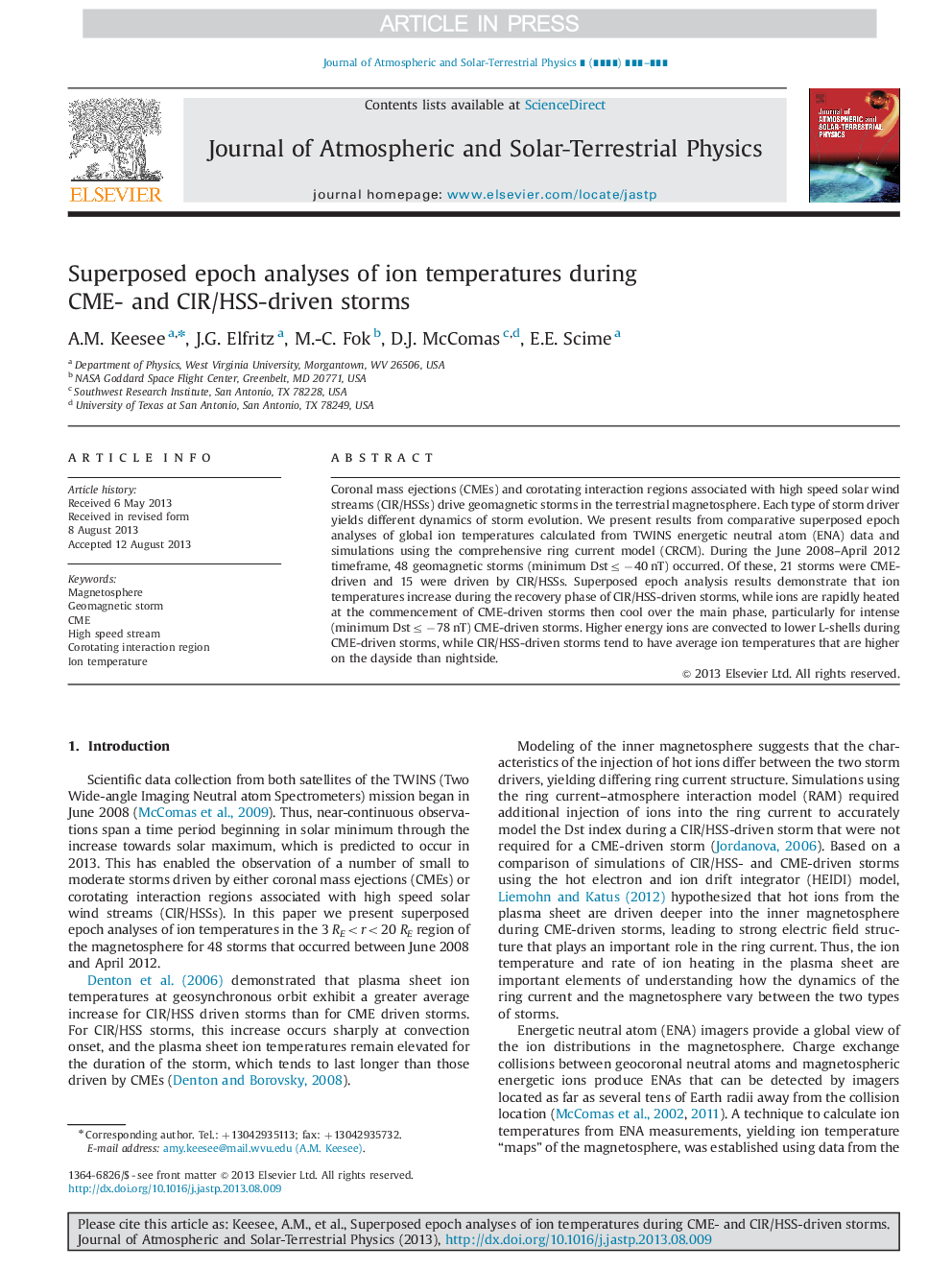| Article ID | Journal | Published Year | Pages | File Type |
|---|---|---|---|---|
| 8140211 | Journal of Atmospheric and Solar-Terrestrial Physics | 2014 | 12 Pages |
Abstract
Coronal mass ejections (CMEs) and corotating interaction regions associated with high speed solar wind streams (CIR/HSSs) drive geomagnetic storms in the terrestrial magnetosphere. Each type of storm driver yields different dynamics of storm evolution. We present results from comparative superposed epoch analyses of global ion temperatures calculated from TWINS energetic neutral atom (ENA) data and simulations using the comprehensive ring current model (CRCM). During the June 2008-April 2012 timeframe, 48 geomagnetic storms (minimum Dstâ¤â40 nT) occurred. Of these, 21 storms were CME-driven and 15 were driven by CIR/HSSs. Superposed epoch analysis results demonstrate that ion temperatures increase during the recovery phase of CIR/HSS-driven storms, while ions are rapidly heated at the commencement of CME-driven storms then cool over the main phase, particularly for intense (minimum Dstâ¤â78 nT) CME-driven storms. Higher energy ions are convected to lower L-shells during CME-driven storms, while CIR/HSS-driven storms tend to have average ion temperatures that are higher on the dayside than nightside.
Related Topics
Physical Sciences and Engineering
Earth and Planetary Sciences
Geophysics
Authors
A.M. Keesee, J.G. Elfritz, M.-C. Fok, D.J. McComas, E.E. Scime,
